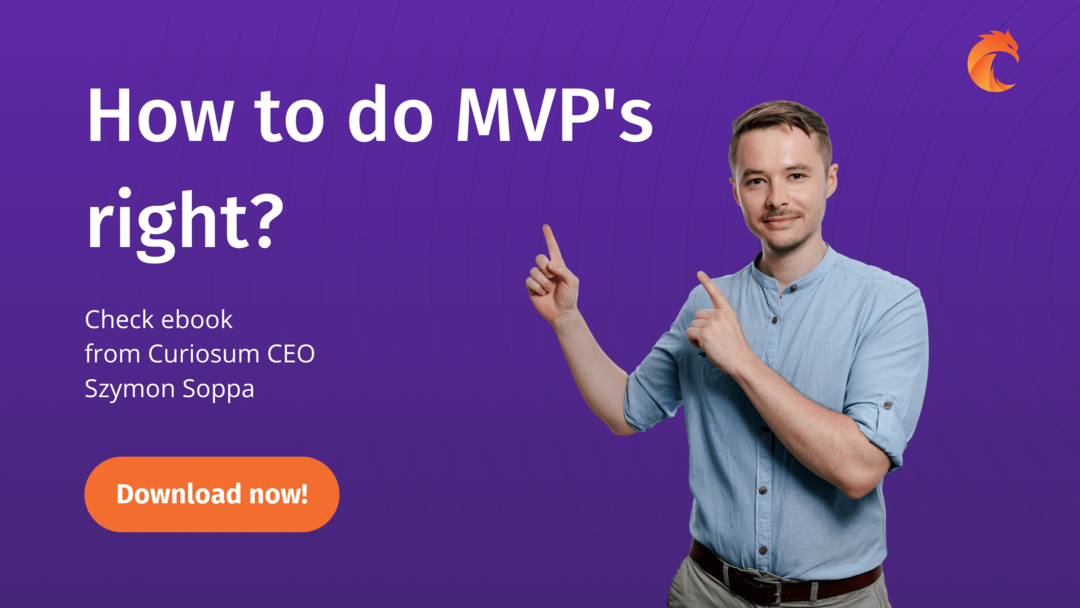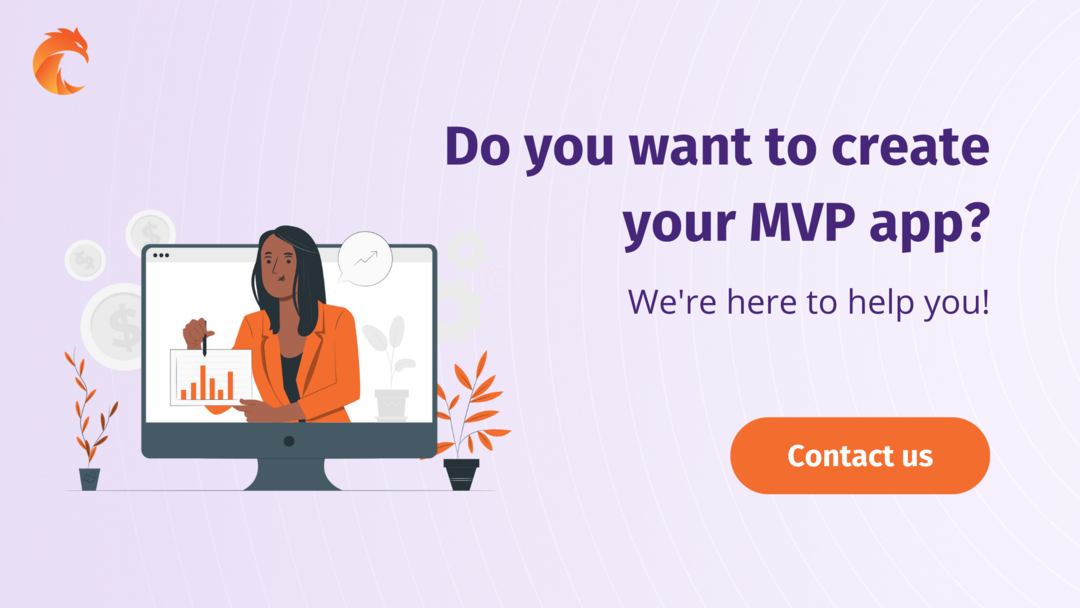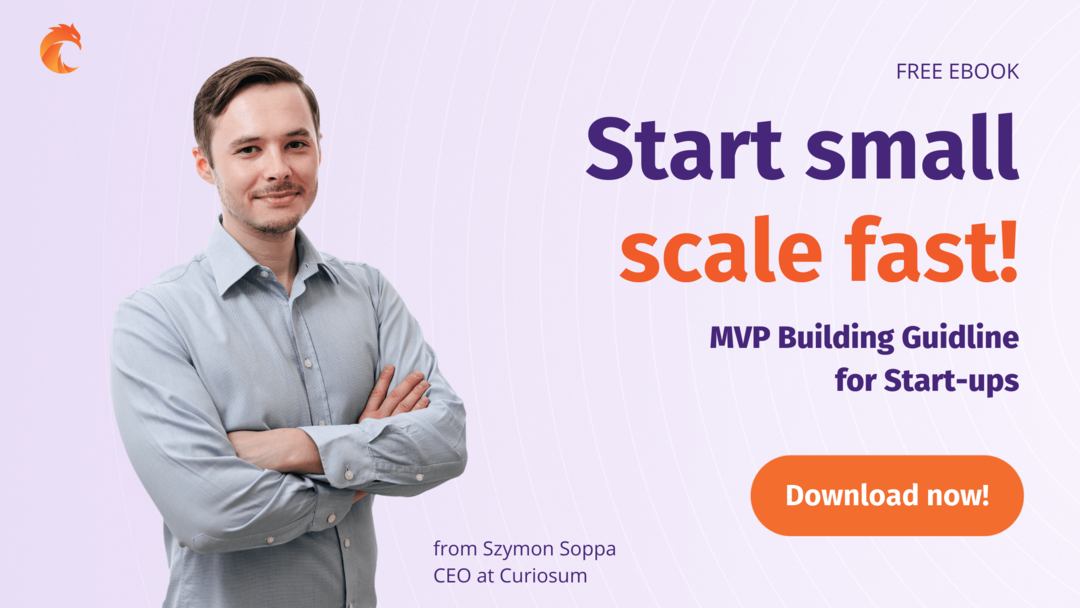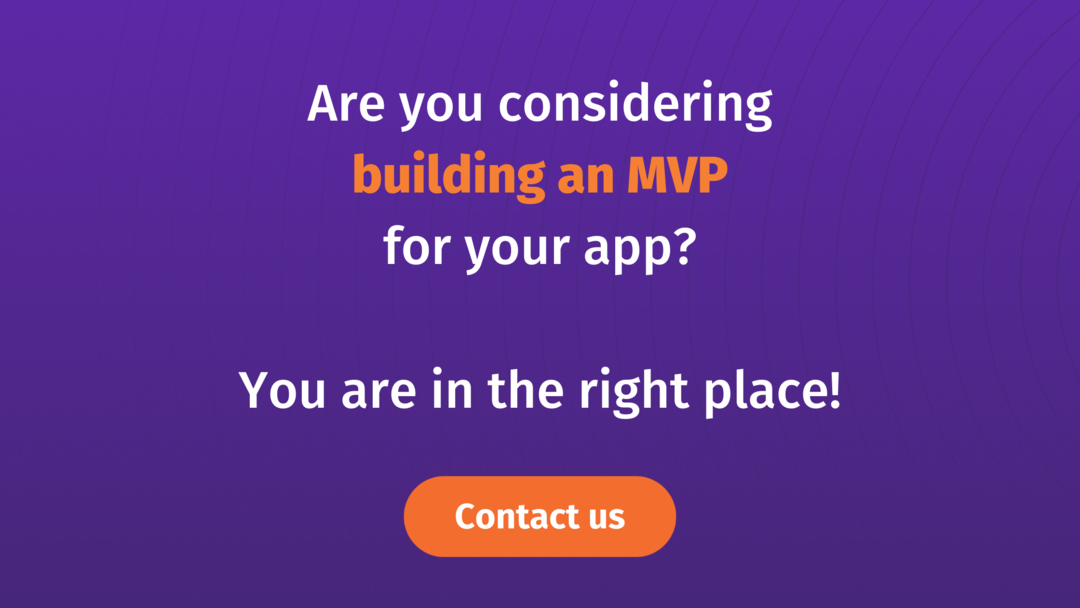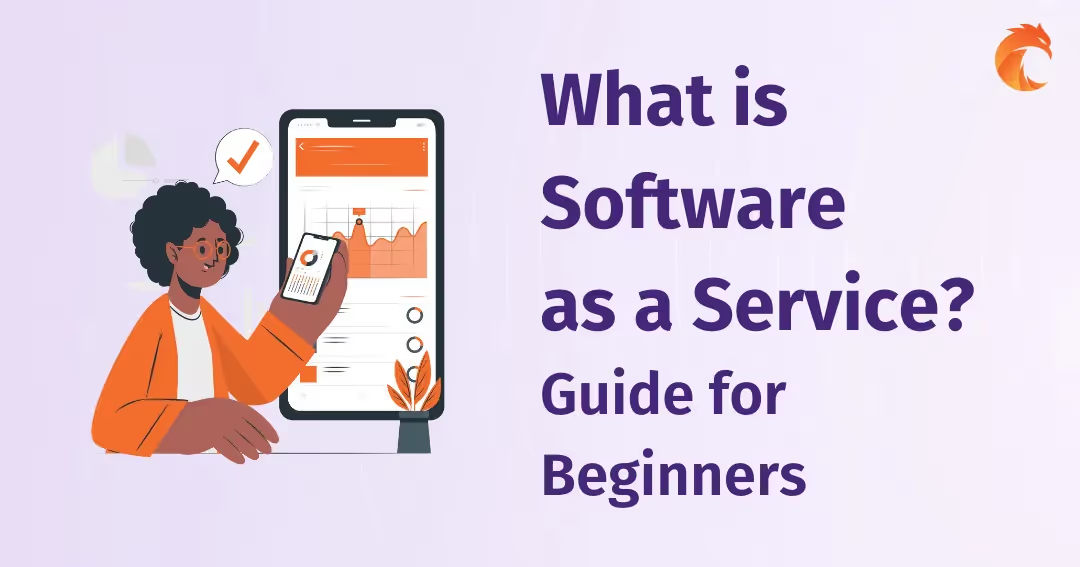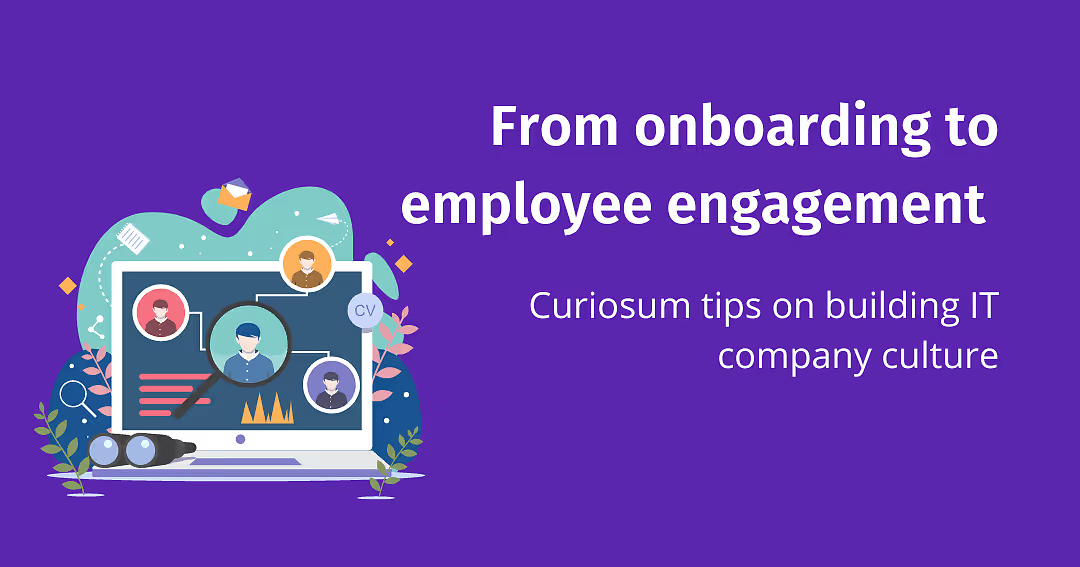11 Best Examples of Successful Minimum Viable Product. MVPs case studies from real business.


Building minimum viable products (MVPs) has become an essential component of a successful product strategy. Learn how an MVP can be created by 11 real business examples that successfully nailed MVPs.
What does MVP mean?
The startup needs to find customers fast and efficiently, so they need to reach their audience quickly. As a tool for validating ideas during an early stage of development, MVP helps to iterate and make further improvements. The lean startup defines the minimum viable product as the version of a new product that can gather the maximum validation of customer knowledge without any cost (or with minimum cost). Is it possible? In this article, we will find some examples that prove it!
What makes a good MVP?
Good MVP allows you to test your product, which is less risky, both financially and time-intensive, than investing right away in the full version of a product. You can do deep research on your audience's needs, understand how to start the strategy of introducing your product to the market and find the necessary features and only the core functionality to develop your product. Many popular digital products were designed as MVP first: Facebook, Instagram, Spotify, Uber, Dropbox, and others (I will show you a couple of examples below). It would help if you always kept in mind that a polished, large-scale application will take years to develop - with the money, time, and effort invested.
How to build a good MVP?
Most startups fail. That's the uncomfortable truth. Why does it happen? Because they build products through blind guesswork, hoping that customers will like them, and in the end, they recognize that they created something nobody wanted. Thanks to the numerous, small iterations that MVP introduces in the product development, there is a much higher chance of finding the product-market fit with one of them which is much less possible if your strategy is based on full product development in one shot. Putting this super simple, we can say that the MVP concept protects you from unnecessary spending or wasting time on products or features that your target market doesn't like or won't use. A minimum viable product will allow you to start learning from your customer's feedback and metrics. This is essential information to help you build the kind of product people want to use.
What are examples of a minimum viable product?
Even small experiments or short videos are acceptable as minimum viable product examples in some instances. Sometimes you need more – an initial software-prototyping version. You must decide what will bring you the best knowledge about your product and help you test your idea but with the most limited resources possible. You can't have MVPs that were polished in an excellent way.
If you want to know how to build your MVP step by step – check the ebook from Szymon Soppa - Complete MVP Builder's Guide for Startups (with checklist). There you will find how to set the right goals or decide what should be the scope of your MVP. But if you want to learn about the best examples of minimum viable products, you will find below 11 stories of successful applications that are well established, but they started from MVPs version of their services.
Lean Startup beginning - IMVU from Eric Ries
We need to start from the source. Eric Ries, the creator of the Lean Startup concept, started from… two startups that failed embarrassingly! And that's why he was looking for the solutions, how to improve the process of creating products better.
So when he started his new startup, IMVU, he wanted to try something different. Eric Ries already knew that startups which wait for their product to be "finished" before public release often end up spending months or years creating something that nobody wanted. This is exactly what happened in Ries' early startups, and he was determined not to make the same mistake with IMVU.
The lean startup is a methodology of avoiding big failure happening to you by showing a process you can follow, to learn what customers want through experiments in the least time possible.
Eric Ries applied his MVP concept to IMVU, which was a huge success, with millions of users and 50 million dollars in annual revenue in 2011.
The story of IMVU
At the beginning of the IMVU (2004), Eric and his co-founders wanted to build a social network around instant messaging (IM) that seemed attractive due to its network effects - the more people joined, the more valuable the network, which makes it even more people join.
It was widely recognized, almost obvious, that it would be challenging to make a new IM network a success. If you're already online with all your friends, you don't want to switch to the new network without all your friends joining. Consider how difficult it would be to build a competitor for Facebook Messenger or Whatsapp today - how would you encourage their users to join your network when all their friends are on Facebook? Would they like to join ANOTHER social network?
To avoid this problem, IMVU chose not to launch its own new instant messaging network. Instead, they built a new layer of 3D video games based on the IM network. Users would first join IMVU, a 3D virtual world where they could create avatars and buy virtual goods. They would then link their IM accounts and send messages to people on existing IM networks to join IMVU. Most importantly, this meant users wouldn't have to switch to an entirely new IM network - it already works with the instant messaging networks they belong to. Great idea, right?
The IMVU team worked for six months on its prototype product. They were constantly worried about the details of their strategy - "How many IM networks should we support? (several) How defective can a prototype be? Will it make us look bad?"
Finally, proudly put on the line, they introduced the IMVU product. And nobody joined!
What happened? To find out, IMVU purchased Google Ads for 5 dollars a day to drive first-time visitors to its site. It was more than enough to get some early metrics and start the optimization process for your product.

IMVU's MVP - tips
When IMVU was released to the public, it was full of bugs. The engineering team led by Ries did feel embarrassed. But one lousy lesson they learned quickly was that they had already wasted months working on some features that no one wanted to use!
For example, spent months integrating IMVU with the most popular instant messaging services. Why? Because they assumed people wouldn't want to sign up for the new app separately when all their friends are elsewhere. However, they found out that users don't care about these integrations! In fact, they wanted to use IMVU to meet new friends, not chat with existing friends safely. It was a big shock for the team, and it caused them to change their plans for the upcoming features radically.
On the other hand, their clients LOVED the stupidly simple "teleport" feature. In fact, they claimed it was better than the more technically advanced features of the competition. But the reality was that IMVU engineers quit the feature at the last second and found it too primitive. So, they found out that what customers value may be very different from what company managers, engineers or designers value.
IMVU was one of the first successful lean startups thanks to early-stage customer feedback - despite mistakes, despite rejecting some features at first. It is a large virtual 3D chat environment where you can dress up an avatar, create a homepage for it and chat with new people online. The company's original product, however, did not contain these features. As a result, the product has evolved through the lean startup process to become what it is today.
Uber
Uber is the best example of the classical MVP model. First, launch a product that offers the core must-have features and add the nice-to-have features in the future versions. Uber, which used to be called UberCabs back in the day, was born out of difficulty finding taxis the traditional way. And that was the problem Uber was focused on in the first stage.
UberCabs was an iPhone app meant to connect the users with cab drivers and offer them a way to make payments via a credit card. The MVP version offered only these features on an initial level. The UberCab application also had very simple graphics.
The fancier features were added only after the app received significant downloads signalling its validation. However, you couldn't download it from the App Store. Instead, you had to email founders and receive a unique code to get the app.
You couldn't pay right in the app in the first version. Yet, this feature was added after a few iterations at the beta stage. It's also interesting to notice that, at first, they handled all the orders manually. Uber's CEO contacted drivers and offered them to accept and manage orders on their own. Only 3 out of 10 agreed, giving a start to the business model that made it the no. 1 taxi app in the world. Uber started with just 3 cars and validated its idea before its competitors could. Yet, after acquiring a few more cars, the manual process turned out to be too difficult and resource-consuming.
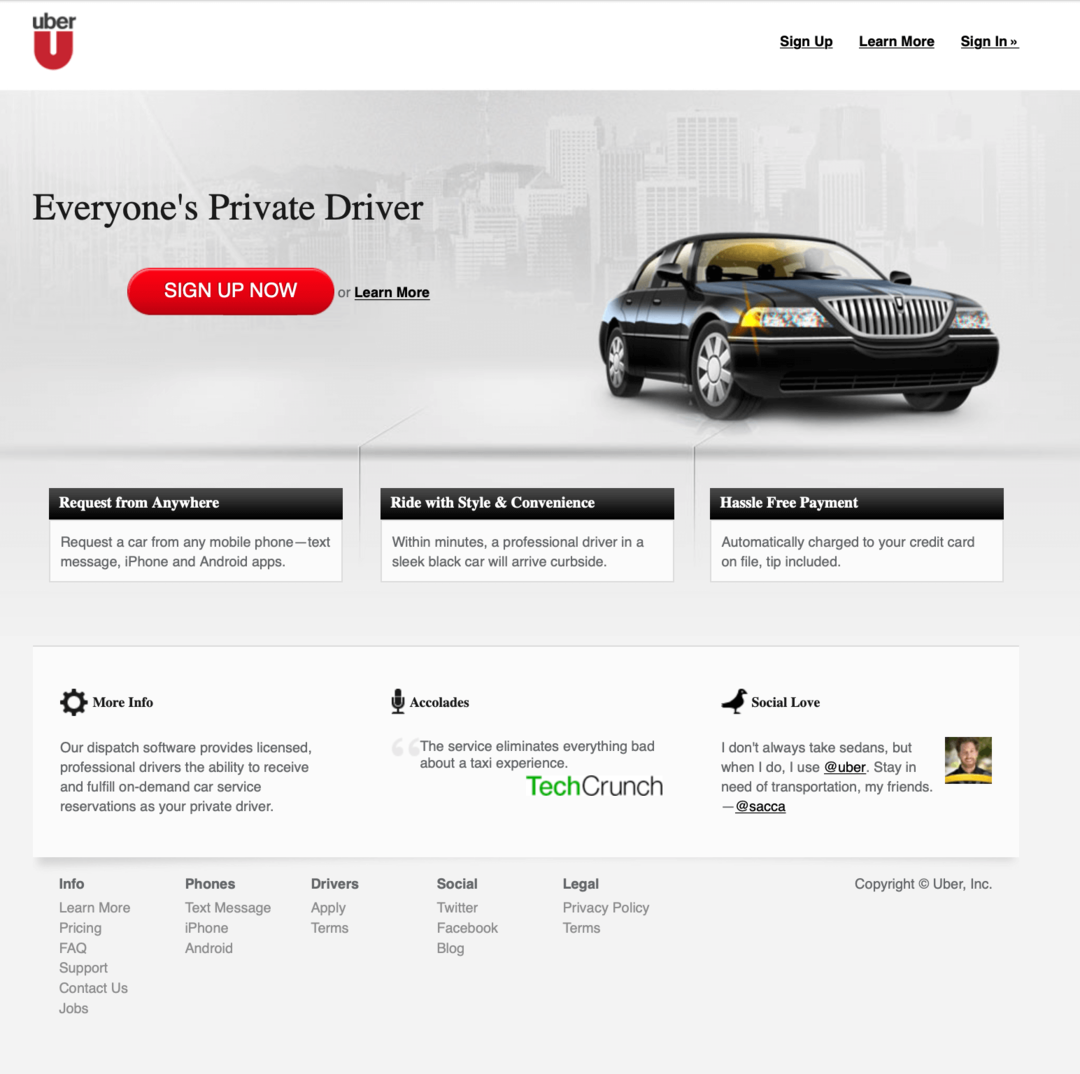
Uber's MVP success – tips
Uber accurately identified a single and pervasive pain, which was hailing cabs. As a result, the MVP was widely accepted. Uber took a basic concept, which allowed them to enter the market quickly, receive honest user feedback, and grow into the massive brand they are today. After collecting enough of the target user data, Uber added other features and services, like location tracking of drivers, an automated payment system via in-app wallet, cost-estimation, fare splitting, etc., in its subsequent versions.
In the app's initial release, focus solely on your app's core benefit. It does not mean launching a bloated product that provides a substandard user experience but rather the basic version of your product that solves the user's problem while ensuring ease of use.
In the beginning, the app was launched in only one city. Next, Uber entered the market in New York City and grew to Seattle, Boston, and other large cities. Uber slowly built out new features based on validations made in those target markets, and in 2012, uberX was born. This was when the company deviated from its MVP. As they learned more about the target market, they could determine the most valuable features for their users.
The app's MVP version helped the company test its idea in the market at a lesser price. Data from the app helped Uber scale and swiftly become one of the most highly valued companies in Silicon Valley.
Instagram — Originally Burbn
The world's biggest picture-sharing app started as an app MVP as well, and sharing pictures wasn't the focus of the app. Instagram's predecessor, Burbn, was initially designed to allow users to check in and share their experiences at various locations with friends.
Kevin Systrom and Mike Kriege also wanted that users could take photos from the app, edit them, and geotag locations. Overnight, 25,000 users signed up for the platform.
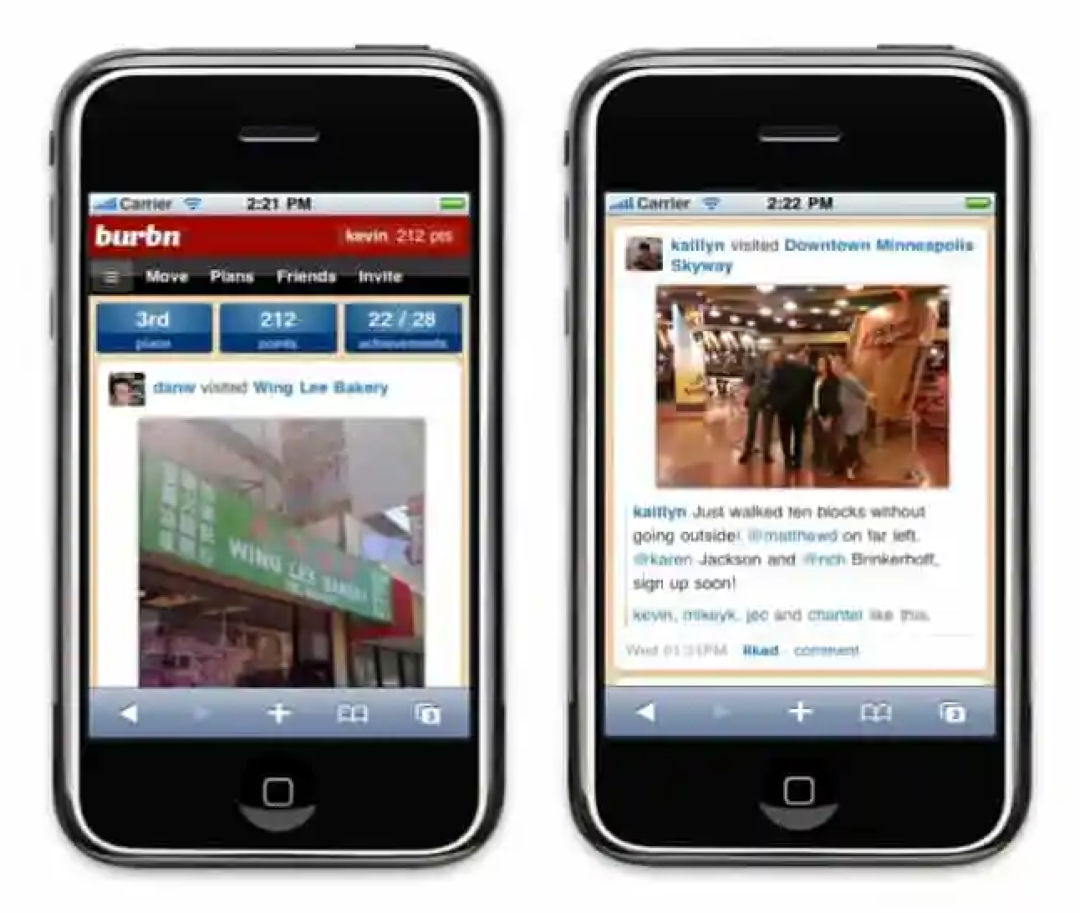
Like many of the MVP examples, it wasn't all plain sailing. Instead of what the founders thought, the original application felt overwhelmed with functionality. It was cluttered and overrun with features. As a result, the users had difficulty understanding what the app offered and found the app confusing.
While the users found its other features quite complex, one of its functionality - photo sharing, was a hit among the user base. There were quite a few apps focused entirely on photo editing and offered filters already on the market. Still, they didn't have the option to share these pictures. Facebook dominated the social media sites, but it provided limited photo editing options.
Instagram founders exploited this gap. They removed all other features from Burbn apart from photo sharing and made sharing, liking and commenting on the pictures a simple process. In addition, they incorporated the filters and renamed the app - Instagram.
Today, Instagram has over 1 billion monthly active users, and 500 million social stories are created daily. With time, Instagram's unique value proposition changed entirely, and today, the platform is ubiquitous.
Instagram has enabled video content support, introduced direct messaging, added Stories, Reels, etc. As Instagram iteratively improved its product, the MVP turned into a full-fledged social media platform.
Check the interview with Kevin Systrom, Founder of Instagram:
Instagram's MVP Example (Burbn) - tips
What Burnb (Instagram) example can tell us? Again - the ideology behind developing an MVP app is to place your product on the market and collect user feedback. The build, measure, learn and repeat cycle is why the MVP approach works so well. Start lean and focus on the core features that solve your users' fundamental problem – in the case of Instagram, it was... photo sharing!
And, what happened to Burbn – remember that you might spend time and money building lots of features, only to cut them out when users don't use them. That is also a big lesson from building MVP first.
Amazon
One of the most famous MVP examples in the world is Amazon. How did it start?
Jeff Bezos saw the rise of the internet and came up with the idea of selling books online. While most entrepreneurs would have sunk money into a fully functioning e-commerce store, Bezos did something clever. He realized that unless he operated frugally, he'd never get to properly test his idea and wind up wasting a ton of cash on an idea that no one wanted.
He left his job as an investment banker, moved back home with his parents, and built an MVP in the form of a simple website.
The company had a buzzer set up that would ring whenever Amazon placed an order in its early days. Many of Amazon's early orders were Bezos' friends and family. Initially, the staff would cheer when they heard the sound, but as sales picked up, the buzzer became so frequent that they had to disconnect it!
Despite its rudimentary design, the original Amazon website helped to prove that selling books online at low prices was a winning idea. In fact, his vision could have died long before it took off if he hadn't acted so frugally.
Focusing on the books at a low prices angle in 1994 via a simplistic web design was all it took for the company to grow and branch out to become the retail leviathan today.
Amazon's minimum viable product example - tips
Despite its MVP's basic design and minimal feature set, the original Amazon platform proved Bezos' assumptions. Selling books online at a low cost was something everybody wanted.
Amazon was hyper-focused only on two things in the beginning. The core feature is to prove their value proposition (online sales) and a specific niche (books).
By sticking to these core elements, Amazon reduced its product development costs and distribution costs because it's cheaper to market to one product niche instead of many.
Twitter took a completely different approach. After Apple released iTunes, a podcasting platform, Odeo went through tough times. While other podcasting companies doubled down and threw good money after bad trying to build their market share, Odeo thought outside the box and started running hackathons.
Odeo knew that trying to fend off Apple was fighting a losing battle. So, they used hackathons to generate new ideas. For example, during one of the board meetings of Odeo (with Jack Dorsey, Evan Williams, Biz Stone, and Noah Glass), they came up with an idea to create an SMS-based messaging platform. Initially, due to the lack of availability of the appropriate domain, the project received the name "twttr". It was supposed to be for internal use only by their employees.
The hypothesis was that users would actively use micro-messaging communication. So, in 2006, Odeo created a social network prototype that allows employees to send messages - the so-called "Twitts" of max. 160 characters long. But this wasn't successful until 2007, when at the South by Southwest Interactive conference that year, daily tweets increased from 20,000 to 60,000.
The internal platform showed the founders of Odeo that the idea of "twttr" might be exactly what they were looking for. Employees were spending hundreds of dollars on SMS to post to the platform.
After the conference, Twitter became a very popular site with a huge user base that has increased exponentially. After successful tests, the service was released to the market in the same year. Known as a social networking site for microblogging, it turns out to be primarily a platform enabling fast and concise information exchange in real time.
Twitter quickly became an investor's darling, raising 1.5 billion dollars, and went public in 2013. In April 2022, Elon Musk informed the world that he's willing to buy Twitter for 44 billion dollars (!), and as this final offer has been accepted, it's very likely that it'll be yet another huge product in Musk's portfolio.
Twitter's MVP success - tips
The best way to look for your next opportunity is to look around you at the problems that need solving, just like the founder of Odeo did. Twitter was highly successful because it was first released to a small group of people who tested the product idea and gave feedback incorporated in later releases.
The features we have come to love today didn't exist in the first version, allowing the developers to carefully validate the product idea before the launch.
Don't try to solve all issues at once. Instead, look for one problem to solve, no matter how small it seems. Then, solve it as no one else has, and you'll be on the right track to success.
What started as an idea to build an SMS service that helped a group of people communicate at Odeo became the de facto way for the world to communicate, drive brand success, and network.
Linkedin's MVP was launched in May 2003. Its primary features included user-profiles and search capabilities. In the beginning, you could only send requests to someone if you knew their email address, which is still an optional feature today. The design of the website left much to be desired. But it was enough to test the idea.

Linkedin was following rapid iteration with additional features that included uploading an addresses book, bulk invitations, or colleague endorsement. They continued adding features and now have over 750 million users in 200 countries and regions.
LinkedIn MVP example - tips
The point of your MVP is to get to market and prove your assumptions rapidly. That should be your focus. Remember, you are not building the most beautiful product on the market.
After a successful Linkedin release, they quickly iterated by adding features such as uploading an address book for bulk invitations and colleague endorsements. It is still evolving and has become the leading business social media platform.
Spotify
Like other app success stories, Spotify also began with an MVP product. The first Spotify MVP was developed as a desktop app offering only music streaming services. Once this idea proved the success, the development team started working on building a mobile app, engaging various artists, and extending their solution.
So how did it start? In 2006, there weren't many music streaming services on the market, and the available ones were horrible. In an era where pirating music was standard, Spotify was founded on critical assumptions that people like to stream (rather than own) music, and artists are happy to let people do that legally. But the main goal was that streaming must be fast and stable.
Once they had a basic MVP, the founders of Spotify started testing the app on themselves, family and friends first. Then, after a success, they extended the beta release to influential music bloggers in Sweden.
The founders identified an opportunity that the music industry could have a product for music lovers by which they can stream songs. Their prototype, Spotify AB, was ready in just four months. The company readily acted on the user's feedback.
The first users loved the experience and began to spread the word about this fantastic new desktop app. After that, Spotify began to gain traction, and it was released to the public.
Daniel Ek, the co-founder of Spotify, recalls:
"[...] we were hell-bent on making it feel like you had all the world's music on your hard drive. Obsessing over small details can sometimes make all the difference. That's what I believe is the biggest misunderstanding about the minimum viable product concept. That is the V in the MVP."
11 years later, the company is still delivering on its promise by iteratively introducing new ways to experience and share music with a platform that allows artists and listeners to build connections.
Over time, Spotify discovered new ways to add value to the listener experience while helping artists use the mobile app to maximize the impact of their music at every stage of their marketing funnels. On top of incorporating new features to delight users, Spotify also strategically aligned every addition towards achieving specific product goals.
Since the company's launch in 2008, it has completely revolutionized the modern listening experience and today dominates the music and podcasts streaming market. They added new features and created a mobile app. Today Spotify has 299 million active monthly users and 138 million premium subscribers.
If they had started straight into full-scale development without testing the idea first, they could've lost lots of money.
Spotify's MVP example - tips
MVPs (minimal viable products) represent your product's prototype launched to a new market. How did Spotify get where it is today? It grew into the most popular music mobile app because of the company's ability to act on user feedback and learn from in-app user behaviour.
Their desire was to unlock the potential of human creativity. As a result, Spotify delivered product iterations that struck the right balance between minimalism and completeness to intelligent solutions to new customer pain points as they became apparent.
Successful apps follow the "build-measure-learn" cycle (from the lean startup philosophy) to develop a small, quality product to test. By using the principles of MVP development, Spotify could have released iterations of its product to gradually ensure long-term value and user alignment.
Spotify could've tried to build cool features like album artwork and lyrics into the first version of their product. But, of course, those features would have taken more time and money to develop. And critically, however, those features wouldn't have got them any closer to proving their main assumptions.
Dropbox
Dropbox is among the most famous examples of companies growing with lean startup principles. However, it approached MVPs differently from those described above, and it is an outstanding example of a minimal viable product. Why? Because the company has showcased its MVPs only with a video!
Movies are a very effective and straightforward way for people to find out about your product. So, you can use the video to generate interest in your idea and check for feedback.
How did Dropbox do it? In 2007 Drew Houston, CEO and co-founder of Dropbox, put the hypothesis that people would be ready to store their files in the cloud.
His team already had the first version of the software that allowed file synchronization regardless of the operating system. But this was just the minimum version for presentation to potential clients, not for use.
During this period, similar technology startups emerged. They faced the same challenges - the service must operate on different systems, be easy to use and enriched with the necessary features. Before Drew invested in the development of the service, he had reached its potential users directly, making sure that they wanted to use it, and he found out what they needed.
How was the testing of the hypothesis? First, they created a 3-minutes-long video showing Dropbox in its first instalment. Drew was the narrator; he displayed his computer's desktop and the available service options on the screen with a good dose of humour. Next, the film was published on the Hacker News website - an integrator of news from social media, devoted to topics related to startups and technology, i.e. where potential first adopters of the service look.
The popularity of the film and the interest in the service exceeded the expectations of Dropbox creators – the waiting list for the beta version increased from 5000 in one night up to 75 thousand! By 2019, Dropbox had reported 14.3 million paid users and had generated a revenue of 1.66 billion USD.
Dropbox is one classic MVP example that everyone quotes when talking about taking an MVP first approach. Even Ries, who popularized the MVP concept, has dedicated an entire section in his book to the Dropbox MVP.
Drew Houston and his team were confident of the product they had toiled long and hard for. Still, they did not know how the market would react to their cloud storage services during fierce competition. They needed a way to demonstrate their product offering to their customers so that they didn't end up with a product nobody even wanted.
The team achieved the much-sought market validation. In addition, the fact that the video contained numerous easter eggs intended for its target audience, which was primarily tech-focused, helped the cause and created virality due to a chain reaction.
Dropbox's MVP success - tips
Dropbox's idea came from the personal experience of its founders who just forgot to take pendrive to work again. It's a good idea to remember when you'll be thinking over your startup project - solving a problem that you, your family, or friends have may provide you with many advantages. For example, it will give you a better understanding of the problem. When you know it from the inside, you're aware of the smallest detail: what need people try to fulfill, why alternative solutions don't satisfy them, etc. Also, if you know where your target audience hangs out, you'll be in a better position to launch your MVP.
One of the top challenges for startups is to create a good product and come up with the right channel to promote it among potential customers. Dropbox did it well.
As we can see, MVP doesn't even need to be an actual product. Even a demo video of the MVP idea works well if your product isn't ready. The lean startup is a methodology that focuses on market validation of your product. Using innovative methods like MVP video can turn your leap of faith product assumptions into data-backed reality.
Dropbox also introduced a referral program. It turned out to be even more successful. They offered free extra space for inviting a friend both to you and a person who signed up after following the link. That's launched a new wave of viral shares, keeping the company's growth rate organic and free. Eventually, it turned Dropbox into a product and company as we know it now.
They could've built a whole hardware infrastructure, developed apps and so on, but that was a risk they weren't willing to take. If the idea had failed, Dropbox founders Arash Ferdowsi and Drew Houston would lose priceless time, a lot of effort and money.
Thus, rather than spending thousands of dollars irrationally, develop an explanatory video to present your innovative MVP idea to potential investors and users.
Airbnb
We can't talk about successful MVP examples without mentioning Airbnb.
Airbnb wasn't always a hugely successful company. Initially, it didn't even have a fully functioning website! In fact, today's modern Airbnb website has almost nothing in common with its initial version. However, this very first version is usually considered one of the classic examples of a Minimum Viable Product.
How did it start? In 2007, Brian Chesky and Joe Gebbia moved to San Francisco to start a business. The problem? They couldn't afford the rent of their San Francisco loft apartment.
To earn some money, the founders of Airbnb opened up their apartment as cheap accommodation for attendees of a large conference in San Francisco. They wanted to check whether its incoming participants would be interested in affordable private apartment rentals compared to hotel offers. They decided to test this in the most effortless manner possible – they provided air mattresses in their living room, free Wi-Fi, and complimentary breakfast. This solved their problem of paying the rent, but it also solved the attendee's problems who had lucked out on hotel bookings.
They built a simple page where they posted pictures of their apartment and the price per night. This webpage can be considered a Minimum Viable Product definition. It had no interactive maps, no options to choose from, and no online payments - only a few photos of the place, contacts, and address. Nevertheless, they took pictures of the apartment, uploaded them and had three paying guests in no time. They quickly realized there was a market for this and built an MVP to validate their assumptions and prove that people would be willing to use their product (Air Bed & Breakfast). Soon, the idea spread far beyond the original San Francisco test area!

They decided that this type of business has great potential and is worth investing in. In this case, the hypothesis, and at the same time the riskiest assumption, was whether tourists would be ready to live with random private persons. It was enough to get 3 first paying customers, raise 240 dollars and catch the idea that they've possibly stumbled upon a goldmine. They had come up with a solution to a problem that plagued many. What started as a simple website that let the founders rent out the air mattress in their loft for some cash, soon transformed into a hospitality giant and an end-to-end travel platform with listings of apartments.
After validating the initial idea and adding a few extra features, they've moved to the step of the solution validation. During this step, they were checking whether the product could solve the problem using the minimum set of viable features. Only then does it turn into one of the MVP software examples.
2009 was a story-changing year for the company. The guys were finally noticed by Paul Graham, a VC and Y Combinator co-founder. He invited them to join the accelerator. Airbnb received its first significant investment of 600,000 dollars. As a result, they finally enabled rapid growth and made their way to global success. From that moment on, they've redesigned their website, changed the name from Air Bed & Breakfast to laconic Airbnb and took a new approach to add properties from other owners. Eventually, this site became one of the most famous Minimum Viable Product website examples.
In just a decade, the company grew to become a 35 billion USD company. Today Airbnb has a vast reach. It offers listings in over 191 countries. By the end of 2022, the number of adults using Airbnb in the U.S. will reach over 45.6 million!
Airbnb MVP app success - tips
Identifying a problem and defining the target audience that needs the solution you offer is the first step toward launching a successful app. Scaling a mobile application from an idea to a successful product requires building its foundations on the identification of market needs and a finding solution approach.
MVP of Airbnb identified a problem and defined the target audience that needed the solution. By building and learning at the initial stages, Airbnb avoided what could have been a costly, feature-rich failure. It is better to fail fast and readjust than learn the same lesson after spending a lot of time and money.
In their initial product, founders played the part of the seller. Then, with some feedback and data on the buyer side, they decided to get some data on the seller side. As a result, they launched an additional feature allowing hosts to list their space on the platform.
You can create an MVP to validate your idea, solution, or both as a rule of thumb. However, it's recommended to start with the idea validation. Why? Because if you're trying to solve a problem no one has or is ready to pay for, there's not much sense in creating a solution, right?
What you should also know, an MVP can help you validate your idea, but you'll have to look for growth opportunities on your own. This concept helps to validate whether there's a need for your product. But after you confirm it, there still may be a long way ahead to success and finding the investors.
Zappos
Do you remember the story from the movie "The Wizard of Oz"? The wizard turned out to be an older man hidden behind a veil, pretending to be a terrifying green head? The Wizard of Oz MVP looks completely functional from the outside, while everything inside is hand-operated by humans. It was similar to Uber or Airbnb, but the best example of this type of MVP is Zappos.
In the late 1990s, the originator of Zappos, Nick Swinmurn, was aware that the vision of creating a place on the internet, combining a wide range of many traditional shoe stores (different brands, types of shoes, colours, sizes), could turn out to be a flop. Customers are already buying various goods online during this period, but not necessarily shoes. So instead of investing time and money in creating an actual store with the necessary infrastructure and backup facilities, Nick developed a dummy website, which at the same time allows him to provide comprehensive customer service.
Swinmurn hypothesized that customers would buy shoes online without being able to try them on. So the founder decided to check it at a low cost first. So he took a photo in the store and posted it on the internet - when the customer bought the shoes online - Nick would go to the store and just buy them to send to the happy customer.
The founder built a site that looked like a professional online store but, in fact, was just a site where he posted pictures of the shoes from his favourite local stores and information about available sizes. He bought the goods only after receiving the order for them. The entire customer service was initially manual, from contact to shipment of goods. As the number of customers increased, comprehensive, automated solutions appeared with time.
Note that the first Zappos customer could experience 100% of the service value - he ordered shoes online and received them at the address provided. Brilliant MVP.
Ten years later, Zappos was acquired by Amazon for 1.2 billion dollars.
Zappos' MVP - tips
Whereas most entrepreneurs would get caught up with building a fully-functioning e-commerce store, buying inventory and signing up delivery partners, Swinmurn did something innovative.
He realized that most startups burn through cash and get killed before they can even test their ideas out. So, Swinmurn decided to create a simple website MVP and went into business without any stock or inventory! This gave him a low-risk way of testing his idea without tying up cash in inventory.
While this wasn't a sustainable business model, it did prove the first assumption: people will buy shoes online.
Groupon
Groupon is a classic piecemeal MVP example. The piece-by-piece method is MVP, where the idea is to use existing tools and services in your product. Basically, it collects the necessary components and pieces them together to give a new functionality and user experience.
This type of MVP allows you to save time and money on building your own technology and infrastructure. Groupon is a representative of this type of MVP on the market. However, they took the word MVP to a whole new level. Back in the late 1990s, coupons and discount vouchers were all the rage, and Groupon's original idea was to make it easier for people to find the best deals.
Groupon launched with a simple WordPress site and regular PDFs emailed to early subscribers. Then Groupon posted daily deals as WordPress blog posts. Head of customer support, Joe Harrow, would spend three hours a day personally emailing customers who had bought a coupon from the platform. The test proved successful, and the company then built its voucher system and backend, driving it to great success.
But Groupon founder, Andrew Mason, didn't make success straight away. Before Groupon, he launched The Point. The Point was about getting people together around some ideas. It could be anything from running a political campaign or a boycott to organizing a charity event. However, the concept itself was too abstract. As a result, projects didn't get enough support even if they seemed ambitious.
That was because there was just too much of everything right from the start. Charity fundraising, kickstarting, and campaigning attracted people with different needs and interests, making none of these successful. But one of the ways people used The Point was collective buying. So instead of keeping all the eggs in one basket, the founder of Groupon decided to focus on this exact feature. And that's where they won!
Groupon's MVP - tips
The Point was a failure and didn't skyrocket due to several reasons. However, Andrew learned a valuable lesson from it: as a result of learning from past failure, he created Groupon, where he went from idea to actual product launch in only about a month. As a result, the project took 10x less time to launch. Moreover, it was pretty simple from the tech perspective - what can be simpler than a WordPress blog?
Despite its less than beautiful design and the handwork needed to reach early adopters, it allowed Groupon to test their model. Instead of spending time and money on a backend infrastructure, they found the shortest road to reach their customers.
So the lesson we can take is to keep TTM (Time to Market) short. The Minimum Viable Product definition itself is about reaching potential customers and validating your idea as fast as possible.
Whereas most startups would have ploughed time and capital into building a fancy website and signing deals with retailers, Groupon did something innovative - they threw up a simple WordPress website. They quickly amassed a vast email list of engaged customers. This helped Groupon convert these leads into revenue, and they then used the income to create their backend and voucher system.
Groupon has stuck to its core need of being a deal-of-the-day list that offers discount gift certificates redeemable at local vendors worldwide. Moreover, users would only receive 1 offer a day in their email box. Thus, it would be possible to channel the whole user base into one thing and get enough people to make a success. And it did!
Remember - focusing on a specific niche will help you deliver the ultimate experience to your users and solve a particular problem. That's precisely what most of the minimum viable product famous examples are about. Moreover, if people start using your product not the way you meant it, consider this an opportunity to review and pivot your concept.
Groupon's model was so popular that they expanded their offerings to encompass everything from salons to international travel! As a result, the service became popular, letting them build the voucher system and backend and eventually become one of the most successful MVP software examples. Groupon offers what their customers need in a simple, easy-to-use interface that works well with their end-users.
Summary - choose your way to do MVP!
I presented you inspirational examples of stories of successful services today that are well established but started from MVP. After reading the list of minimum viable product examples, it's easy to see why building an MVP has become the de facto process for startups. MVPs are essential to agile development. It allows entrepreneurs to stay at the forefront of innovation and test their ideas without giving up all their time, effort and money. This methodology is built around testing & iterating products according to user experiences.
Remember
When choosing the type of MVP you want to work on, your budget will be one of the most important factors that influence your decision. Don't spend your money on a product that nobody will want to use. Get creative and think about what you can do to validate your idea quickly, cheaply and effectively:
- Think about your target users' fundamental problem and how to solve it.
- Pick one MVP strategy that you think will be right for you.
- Cut down your product to the key features needed to prove your value to your target users.
- Create a simple plan to do your MVP. Also, prepare a good MVP marketing strategy (you can use our complete guide that will help you)
- Test the market reactions and collect relevant feedback
- Finally, decide whether the experiment has been successful and whether you want to continue it.
Good luck!
Ready to scale your business with the right tech partner?
Related posts
Dive deeper into this topic with these related posts
You might also like
Discover more content from this category
Software as a Service (SaaS) provides the most extensive choice for business owners in the cloud market. Why? The site is easy to access - you only need an internet connection and a web browser.
The Curiosum way of greeting newly hired employees and keeping the employee lifecycle and workplace culture thriving.
The foundation of any software application lies in its tech stack. But how do you choose the right one for your business? This guide will help you to discover the tech stacks field, offering insights and recommendations for businesses of all sizes.


